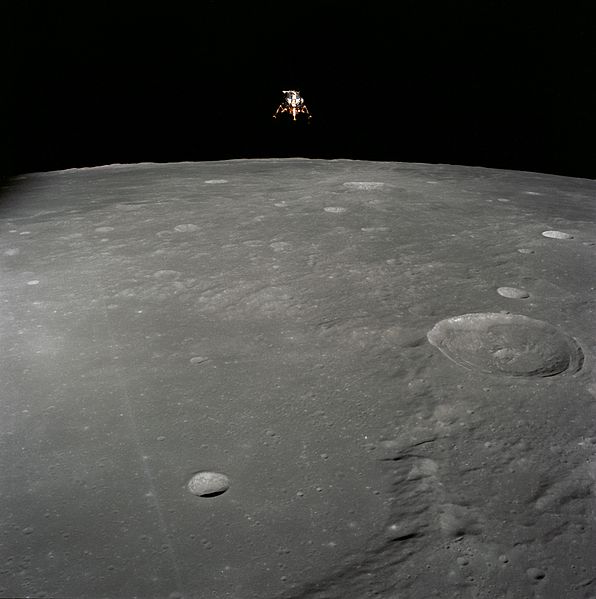Ptolemaeus (lunar crater)
Ptolemaeus is an ancient lunar impact crater close to the center of the near side, named for Claudius Ptolemy, the Greco-Roman writer, mathematician, astronomer, geographer and astrologer. It measures approximately 154 kilometers in diameter.
Ptolemaeus from Apollo 16. NASA photo.
The crater area in a Selenochromatic format Image (Si)
The Apollo 12 lunar module Intrepid flies over Ptolemaeus and the smaller Ammonius within it. Herschel lies to the right. NASA photo.
Ptolemaeus crater in Weinek's Lunar Atlas from 1897, on the photo, north is downwards
Claudius Ptolemy was an Alexandrian mathematician, astronomer, astrologer, geographer, and music theorist who wrote about a dozen scientific treatises, three of which were important to later Byzantine, Islamic, and Western European science. The first was his astronomical treatise now known as the Almagest, originally entitled Mathematical Treatise. The second is the Geography, which is a thorough discussion on maps and the geographic knowledge of the Greco-Roman world. The third is the astrological treatise in which he attempted to adapt horoscopic astrology to the Aristotelian natural philosophy of his day. This is sometimes known as the Apotelesmatika but more commonly known as the Tetrábiblos, from the Koine Greek meaning "Four Books", or by its Latin equivalent Quadripartite.
Portrait of Ptolemy by Justus van Gent and Pedro Berruguete (1476)
Engraving of a crowned Ptolemy being guided by Urania, by Gregor Reisch (1508), from Margarita Philosophica showing an early conflation of the mathematician with the royal house of Ptolemaic Egypt, with the same last name.
Pages from the Almagest in Arabic translation showing astronomical tables.
A depiction of the non-Ptolemaic Universe with no epicycles, possibly from 500 years before Ptolemy, as described in the Planetary Hypotheses by Bartolomeu Velho (1568).








